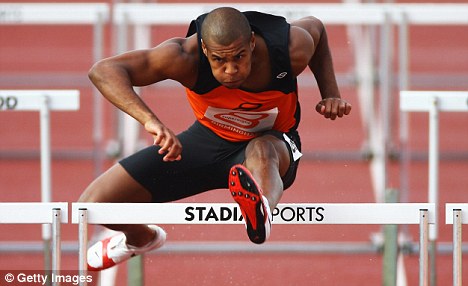 Product delivery is a discipline that requires the involvement of all segments of an organization:
Product delivery is a discipline that requires the involvement of all segments of an organization:
- Customers and Stakeholders
- Product Owner
- Scrum Master
- Delivery Team - UX/Dev/QA
- Operations
- Services and other specialized teams that touch the product in anyway as it moves from concept to delivery to production.
As I mentioned in my previous entry, maximizing the smoothness of product delivery is like running the hurdles. How so?
What happens when you first start running the hurdles with no experience? You stand at the starting line and then you start to run. As you approach the first hurdle you try to determine how you are going to make that first jump.
Is that first approach smooth? Probably not. You probably came up to that first hurdle and maybe stutter-stepped before trying to jump or even had to stop before you actually tried to get over the hurdle. Why? Because you didn't know what to expect, you didn't know what you didn't know as you ran toward that first hurdle. Maybe you made it over all of the hurdles but it probably wasn't pretty, perhaps you fell a few times in the process.
So with skinned knees and wounded pride you make your way back to the starting line and you try again and again and again.
In this process you are setting your baseline performance. Are you getting better with each attempt? Hopefully....because we really want to be a successful sprinter.
As you continue training, perhaps even getting a coach, you start to break down your individual steps as as you go from hurdle to hurdle. Over time and through practice and experimentation you make small changes in order to maximize your speed and efficiency in getting to, over and past each hurdle. Not paying atttention to how you land after a hurdle means you may not approch thet next hurdle most efficiently. As you continue this practice and feedback loop (Retrospective) you can begin to reach ever higher levels of speed and success.
Eventually you don't see the hurdles, they are just part of the process of completing the race. They aren't obstacles anymore.
This approach is how athletes get to world class levels.
How is Product Delivery like running the hurdles? With each step from ideation to delivery there are hurdles that we face that keep the entire delivery process from being efficienct and effective.
And more importantly, whereas a sprinter has the luxury of knowing that their hurdles are 30ft apart and either 39"-42" tall, Agile Product Delivery teams don't always know where their hurdles are at, but through effective use of Scrum, teams can begin to identify where the hurdles are and start the process of learning how to approach and exit each of those hurdles, using Retrospectives.
We too can get to a point where our hurdles are just part of the process and if you aren't running the hurdles anymore what are you running? A sprint.....
What are some of the common hurdles that we face in Agile Product Delivery?
- UX Design not clear
- Lack of Product Vision
- Poorly formed product backlog/user stories
- Lack of technical excellence - Continuous Integration, Automation, code reviews.
Successful Agile delivery is all about identifying your hurdles, getting them lined up appropriately and working to maximize the efficiency of the steps we need to take to get to the end.
As with world class athletes we need to continue to evaluate our approach and drive world class product delivery for our customers.


